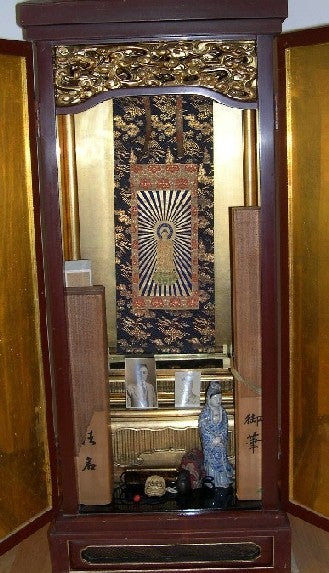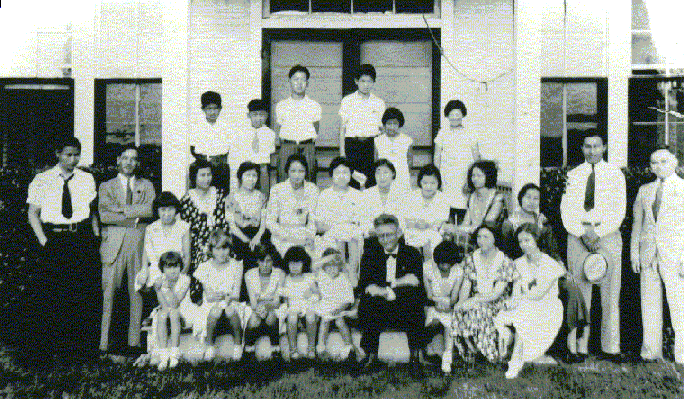The Terry Community

Many of the Terry community’s constituents were based in the Kishi Colony. Following World War I, the Terry community experienced a period of population growth over ten years. Although owing in part to the success of the Kishi Colony at the center of the community, Kichimatsu Kishi had also made large efforts to turn Terry into an attractive community. Kishi paid $1,800 for the construction of a small white church on 3 acres of land he had donated and added to the existent Terry buildings a train depot, a schoolhouse, and a store. The church was visited by a pastor once a month who received half of his salary from. Excited to share his passion over religion with others, Kichimatsu taught Sunday school in Japanese for those who were unable to participate in the English-taught Sunday school. Kishi was also very welcoming of the other Sunday School teachers who often stayed at the nearby Kishi home. [1,3] Interestingly, although showing great interest in Christianity, Kishi was a devout Buddhist. On why he taught Sunday school, Kishi once said that “there was hardly any difference at all between Buddhism and Christianity, as far as doing good was concerned.” He said at another time that, “Man without God in his heart cannot attain the full measure of his service to mankind.” (Cleta K.T. Evans to Orii, 10/3/1982) [2]

Much like Kishi, many of the older colonists were Buddhists. However, many of the newer generation colonists became Christians. The change was welcomed by the parents of children. Sataro Kondo, for example, told his son Sakichi “for you who are young, maybe it is good to change. But for me, there is only the old way. I cannot change.” Kishi himself was another example, once saying that “he would always be Buddhist, but the children were Americans and should be taught Christianity to become good Americans.” This open-minded approach resulted in little conflict over religion in the Terry community as the Buddhist members were accepting of other religions. A Buddhist altar with a scroll picture of Buddha and a porcelain figurine of Kwannon, the goddess of compassion, still remains in the family. (Orii, 1983, Tomlinson, 144; Wingate, 334; OCHC, “Kishi Colony,” 10-11; Cleta K.T. Evans to Orii) [2,3]
Philanthropy is a big part of Kichimatsu Kishi's character and was not limited to the consruction of the Terry Community Church. He also sponsored a kindergarten, which was held four times a week in the Terry Church, and donated 7 acres for a nearby school in Orangefield. Kishi also frequently helped Susie Thompsan, the county home demonstration agent, in hosting an agricultural club for Terry Children. The club held weekly meetings to enrich the children’s knowledge of Texas history. This club also taught multiple useful skills to these children such as sewing, gardening, and the canning and preserving of foods. On days where Orange County Fair competitions occurred, many Japanese children who were club members won ribbons. Kishi’s many chartitable contributions not only improved the Terry Community but painted the Japanese community in a positive light and may have played an important part in easing tensions and prejudice among other non-Japanese community members. [1]

[The UT Institute of Texan Cultures at San Antonio, courtesy of J. Nagai Family]
Far left: Yochi Kishi and Tokuzo Hirasaki
Far right: Toki Kishi, Taro Kishi, Mr. Merkel
Second from left on front row: Frances Haven; man in center of front row: Rev. Ben Bering
Starting from fifth in middle row: Fumi Kishi, Teri Matsucha, and Ai Kishi
References
1. Walls, Thomas K. (1987) The Japanese Texans, San Antonio: University of Texas, Institute of Texan Cultures at San Antonio, 1996.
2. Orii, K. (1983) Kichimatsu Kishi’s Japanese Colony at Terry, Texas, Department of History, University of Pennsylvania.
3. Wingate, G. (1974) “The Kishi Colony,” in The Folklore of Texan Cultures, Abernethy, F. E., ed. The Encino Press, Austin.
